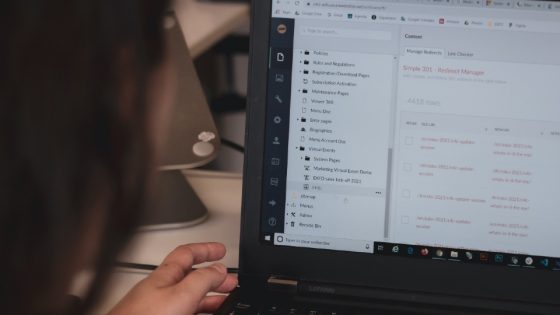We must consider the targeted use of data and how it can better support the provision of personal tutoring to aid conversations and improve student wellbeing, says Professor Michael Draper, Deputy Pro-Vice Chancellor Education, Swansea University…
If a student has an issue arise with their academic studies or with university life in general, then this is where a personal tutor steps in. The role description may vary from institution to institution, from student journey advisers to coaches, but personal tutoring, regardless of how it is defined, is a combination of responsibilities and is both proactive and reactive in nature.
Tackling challenges in a targeted way
Recently, the demands upon those undertaking the personal tutor role, have increased. The legacy of COVID-19 affecting staff and student wellbeing, as well as the delivery and engagement with learning and teaching are still evident.
These increased pressures come in addition to a significant increase in the number of students declaring a health condition when entering university. Rising to 450% in a decade, according to UCAS in 2021. Added to this, is the cost-of-living crisis which is understandably causing increased anxiety.
The challenges are clear but to better assist tutors to understand the trends that affect student progression then we must consider the targeted use of data and how it can better support the provision of academic as well as pastoral support.
How do we use data to engage?
If we are to truly support student retention, progression and wellbeing, then we need to fully understand how we measure engagement. Historically, at Swansea we had a variety of systems for measuring student engagement, ranging from paper-based to electronic documents resulting in inconsistency in data collation, storage, and access. Locally stored data proved especially problematic when staff were ill, left the University or when information needed to be appropriately shared among departments.
To embrace these inconsistencies, we decided to implement a student engagement analytics platform which we did in the form of StREAM from Solutionpath which provides a clear and transparent record of student interactions that addresses GDPR, storage, access and sharing issues we had previously encountered.
Changing culture and practice
Within the platform, it is clear which staff members are responsible for which students and interactions can be clearly and simply recorded and shared appropriately. The University provides guidance on how to manage issues of confidentiality and privacy, recognising that not all data is appropriate for central recording and sharing. The University has been working to ensure that the student engagement analytics platform is used across the staff body, recognising that it takes time to change culture and practice.
Our approach is to ensure that use of the platform aligns to how the University has provisioned our student support systems and how students will be signposted or referred. Ultimately, the use of student engagement analytics is about ensuring that responsibilities are clearly defined, that interventions are closed off and that no student falls through the gap.
Delivering successful outcomes
Staff are encouraged to use their contextual knowledge – about what is normal in terms of student engagement at this point in the academic year, or about the student, their programme, and the University – alongside engagement insights, to support students to get from where they are to where they need to be. This is particularly important in the context of the Office for Students condition B3 requirement for universities to deliver successful outcomes for all students. In this context, the platform can also be used to nudge and encourage more high-performing students as well.
How to start conversations
So, with the data in place how do we encourage conversation to drive action? At Swansea, we feel strongly about putting the processes in place and removing barriers to access the support needed. As such, we are continually reviewing how our tutoring and pastoral support is delivered to students to determine whether the approach is fit for purpose.
Most recently, we have taken the stance to revert back to a personal tutoring model. Previously, tutors were labelled academic mentors, but the title left students confused as to what they could or could not discuss with their tutor. Moving back to the description of personal tutor now clearly signposts the role to students as involving both academic and pastoral support.
With data in hand, personal tutors can spot trends in engagement, proactively reach out to students they feel may be struggling, listen empathetically, offer advice on academic issues and signpost students to the Central Services Support team on clinical or personal issues to accurately refer the individual to the most appropriate professional support available.
Now we are confident that any individual can go to their personal tutor who they see as a trusted source, not feel judged and get the help they need whether that be academic or personal for every chance of success.
However, without the data in place, it would be more difficult for us as an institution to see signs, so the adoption of the student engagement analytics platform has played a crucial part in this. It has allowed us to embed new ways of working, changing people, process, and culture, all within the context of how the University wants to provide academic and pastoral support.
We now have the ability to spot changes in student behaviours so we can proactively reach out to offer advice, guidance and specialised support to improve outcomes for all.
Image by free stock photos from www.picjumbo.com from Pixabay






Leave a Reply